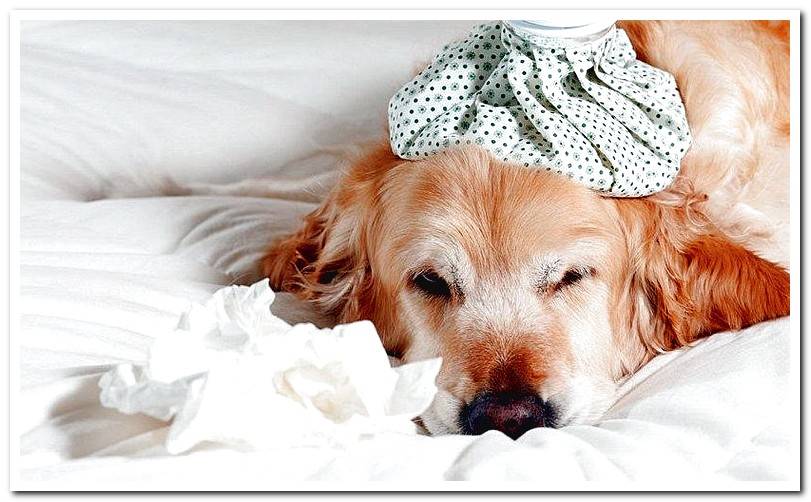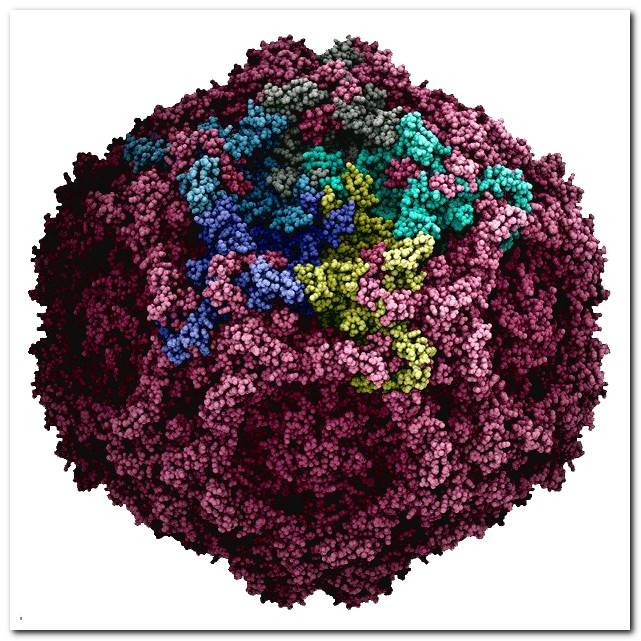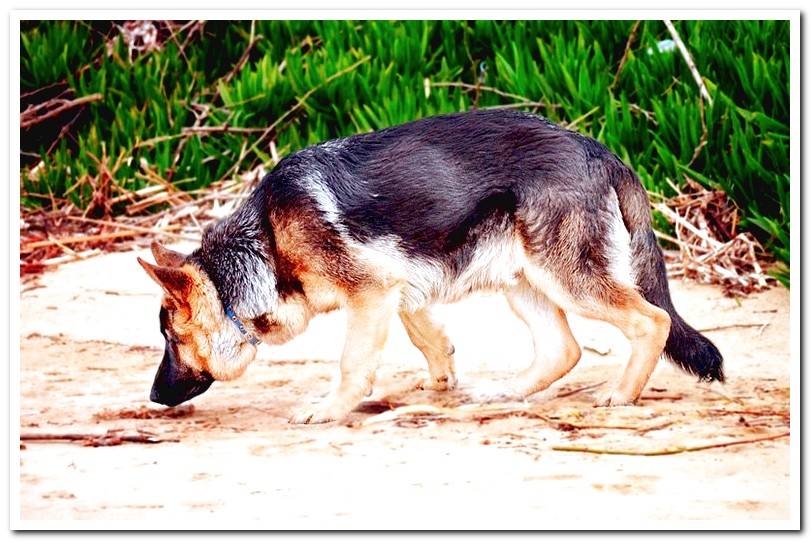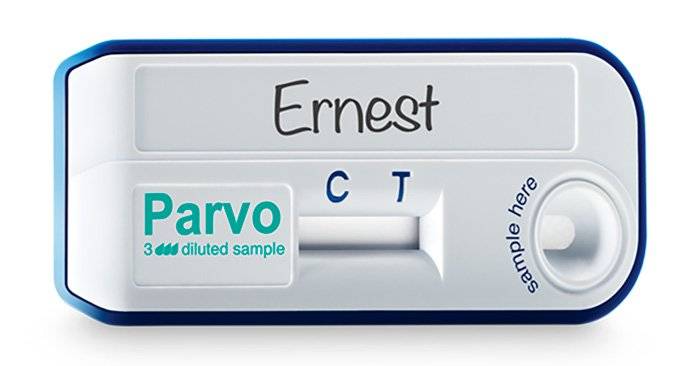
Canine parvovirus is the cause of the disease that bears its name: parvovirosis. It is a very contagious and life-threatening pathology. It mainly affects unvaccinated puppies.
Given its severity, below we will explain what symptoms it causes, so that we can immediately go to the vet. On the other hand, we must prevent it by following a correct vaccination schedule. Do you want to know more details about the parvovirus?
- You may also like: Recommended vaccinations for dogs
Index of contents
- 1 What is canine parvovirosis?
- 2 Symptoms of parvovirus in dogs
- 3 How is parvovirus spread?
- 3.1 Can parvovirus be prevented?
- 3.2 Which dogs have parvovirus?
- 4 How to diagnose parvovirus
- 4.1 Kit to detect parvovirus
- 5 Parvovirus treatment
- 5.1 Should a dog be fed parvovirus?
- 6 Prognosis of a dog with parvovirus
What is canine parvovirosis?
Parvovirus is a viral disease of acute presentation, that is, sudden, very contagious among dogs. The first case is described in the 70s. The parvovirus that causes it has a preference for infecting the reproducing cells such as those of the mucosa of the digestive system, which causes its typical symptoms.
It is a serious illness, life threatening. In affected dogs we can find variations in the expression of the clinical picture. In most it will be very serious, but in other dogs, especially if they are vaccinated, it may be more mild.

Symptoms of parvovirus in dogs
Once contagion occurs, the incubation period lasts about 4-5 days. Behind him, a series of symptoms will suddenly appear, acutely. The severity depends on both the virulence of the strain and the conditions of the affected dog. The clinical picture stands out for symptoms such as the following:
- Depression, vulgarly we could say that the dog is lying.
- Intense vomiting.
- Profuse diarrhea with blood and a very characteristic odor.
- Fever Variable, very high in some specimens while others do not show any alteration in temperature.
- Very strong abdominal pain, causing the dog to keep its belly tucked up.
- Very rapid dehydration as a result of vomiting and diarrhea.
- Before, cardiac symptoms were also present, but nowadays it is infrequent thanks to the extended vaccination of bitches, which also increases protection for puppies.

How is parvovirus spread?
Transmission of this virus occurs through contact with the feces of an infected dog. The virus is eliminated in your stools for up to weeks after infection. In addition, the dog carries it in its body. The virus is also found in objects and we can even carry it with us.
If we have a sick dog, as prevention we will have to clean and disinfect the home. Parvovirus is resistant to many products and can survive for months in the environment, but we managed to eliminate it with household bleach. We should let it act for about 20 minutes.
Can parvovirus be prevented?
We insist on the importance of vaccination. At about eight weeks of age, puppies should receive the first dose of the vaccine. Until they have completed all, at approximately 16 weeks, they can’t go outside. Afterwards, protection must be maintained by revaccinating annually.
This isolation is justified by the need to prevent contact with stools of infected dogs that could transmit the disease. Nor should we allow puppies without all vaccinations to associate with dogs if we do not know for sure that they are well vaccinated.
Which dogs have parvovirus?
This sickness can affect any dog but it is much more frequent in puppies. Specifically, the incidence increases between 6 and 20 weeks of age, which coincides with a decrease in the defenses transmitted by the mother and the period in which not all vaccines have been administered yet.
In addition, the Doberman and Rottweiler breeds are more likely to get parvovirus and have a more severe condition. The reason is unknown. To prevent it, it is recommended to vaccinate these dogs earlier, at approximately six weeks of age.

How to diagnose parvovirus
First of all, it is very important for us to be clear that any sudden episode of vomiting and diarrhea in a puppy should make us suspect parvovirosis. Therefore, you should go to the vet without delay.
If it is a simple gastroenteritis it could have resolved on its own, but if it is parvo, we will have saved time. Parvovirus symptoms, especially bloody diarrhea, are usually significant enough for the vet to make the diagnosis.
However, this can be confirmed by a blood test. The veterinaryn will extract a sample and send it to the laboratory, which also serves to know the general condition of the dog. The virus is also detectable in feces.
Kit to detect parvovirus
In a faster way, a kit is available that allows you to discover, in a few minutes and in the clinic itself, whether or not the dog has parvovirus. It is a device where a drop of blood is placed. Like a pregnancy test, it will mark a vertical line in addition to the control line if the result is positive. There may be false negatives.
Parvovirus treatment
Although some specimens may receive adequate treatment at home by presenting a milder picture, it is usual to require admission and intensive veterinary intervention.
There is no antidote to parvovirus. Treatment can only be supportive, which means keeping the dog in the best possible condition until your immune system manages to control the virus. To achieve this, the goal is to mitigate symptoms and keep the dog hydrated.
You will be given intravenous serum, in addition to the necessary drugs that include medications to control vomiting and diarrhea, as well as antibiotics to prevent the proliferation of secondary ba
cterial infections that take advantage of the dog’s weakness. These infections are those that in some cases kill the animal.
Should a dog be fed parvovirus?
Sick dogs should not eat or drink until vomiting has completely subsided. This can take up to five days in the most severe cases. Why the dog will be entered in the meantime. As soon as the vet authorizes us, we can start offering you food and water.
We will start small amounts several times a day. It is normal that the dog does not show much appetite at first. To stimulate it we can try special wet food for convalescent animals. Another option that they usually accept well is cooked, chopped chicken without salt or seasonings.
We can accompany it with rice that is also cooked. If we offer warm food, it will be more appetizing. For dogs that have a harder time starting to eat again, we can give them their favorite food. In any case, we will gradually mix it with its usual menu until full recovery.
- Soft diet for convalescent dogs
Prognosis of a dog with parvovirus
As in any other disease, it will not affect all dogs equally. The severity will depend both on the aggressiveness of the specific strain of the virus and on the state of the affected dog and of the speed with which we start the treatment.
Many of the dogs that receive the appropriate treatment are going to be able to recover without major complications, but we cannot lose sight of the fact that a considerable percentage of the patients die. Just in case, it is advisable to prevent.
